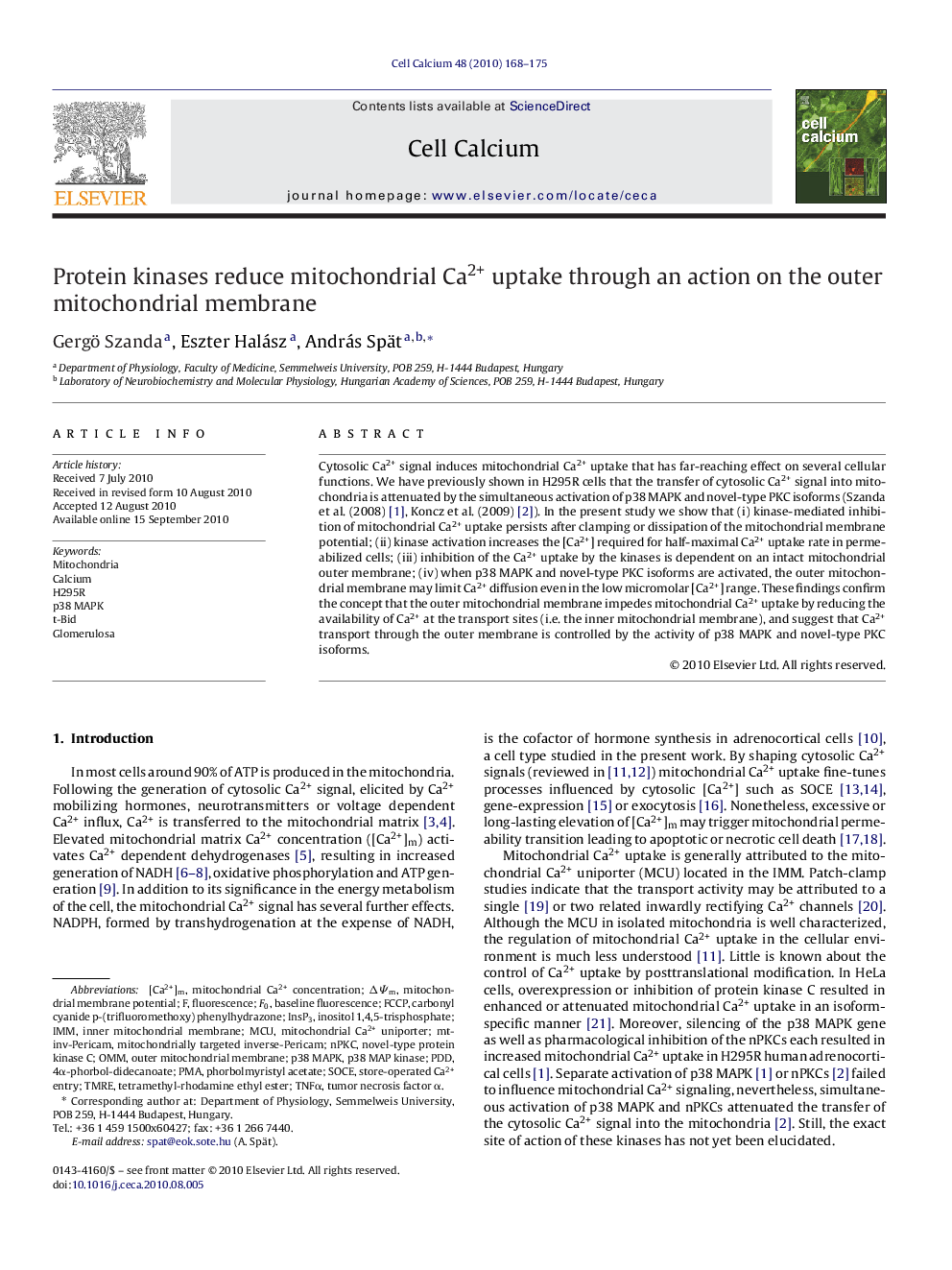| Article ID | Journal | Published Year | Pages | File Type |
|---|---|---|---|---|
| 2166282 | Cell Calcium | 2010 | 8 Pages |
Cytosolic Ca2+ signal induces mitochondrial Ca2+ uptake that has far-reaching effect on several cellular functions. We have previously shown in H295R cells that the transfer of cytosolic Ca2+ signal into mitochondria is attenuated by the simultaneous activation of p38 MAPK and novel-type PKC isoforms (Szanda et al. (2008) [1], Koncz et al. (2009) [2]). In the present study we show that (i) kinase-mediated inhibition of mitochondrial Ca2+ uptake persists after clamping or dissipation of the mitochondrial membrane potential; (ii) kinase activation increases the [Ca2+] required for half-maximal Ca2+ uptake rate in permeabilized cells; (iii) inhibition of the Ca2+ uptake by the kinases is dependent on an intact mitochondrial outer membrane; (iv) when p38 MAPK and novel-type PKC isoforms are activated, the outer mitochondrial membrane may limit Ca2+ diffusion even in the low micromolar [Ca2+] range. These findings confirm the concept that the outer mitochondrial membrane impedes mitochondrial Ca2+ uptake by reducing the availability of Ca2+ at the transport sites (i.e. the inner mitochondrial membrane), and suggest that Ca2+ transport through the outer membrane is controlled by the activity of p38 MAPK and novel-type PKC isoforms.
